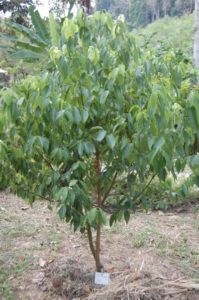 Cinnamon Leaf Essential Oil is Eugenol rich and offers anti-viral, anti-bacterial, anti-oxidant, and anti-fungal benefits. Eugenol also has analgesic properties and has been shown to soothe aches for up to four hours and is used dentistry. It also has anti-inflammatory, anti-spasmodic, and neuro-protective properties. Cinnamon leaf is said to have an expansive energy and can help us stretch ourselves but feel as though we have a comforting safety net. Cinnamon leaf would be a safer choice to use topically but make sure to keep it to only 2-3 drops per oz of carrier oil or cream.
Cinnamon Leaf Essential Oil is Eugenol rich and offers anti-viral, anti-bacterial, anti-oxidant, and anti-fungal benefits. Eugenol also has analgesic properties and has been shown to soothe aches for up to four hours and is used dentistry. It also has anti-inflammatory, anti-spasmodic, and neuro-protective properties. Cinnamon leaf is said to have an expansive energy and can help us stretch ourselves but feel as though we have a comforting safety net. Cinnamon leaf would be a safer choice to use topically but make sure to keep it to only 2-3 drops per oz of carrier oil or cream.
Cinnamon Bark Essential Oil is aldehyde rich. It has been shown to be effective against E. Coli, Candida albicans, and S. aureus. Cinnamon bark has proven useful for gastrointestinal issues. It has been used to calm spasms, soothe nausea, stimulate appetite, and soothe aches associated with colds and flu.
However being aldehyde rich it can also be very skin irritating and must be well diluted and used with care when diffused. Tisser and & Young recommend a maximum dermal dose of 0.05% (about 1 drop in 40 mls or 1.35 oz based an aldehyde content of 75.7%). It is NOT recommended for use during pregnancy or around children under five. Given its low dermal limit, great care must be taken if used topically. Cinnamon bark is said to be nurturing and comforting like a warm blanket — supporting us on a deep level.
Fall Inspired Diffuser Blend
- 1 drop Black Spruce (Picea mariana) or other woodsy essential oil
- 3 drops Sweet Orange (Citrus sinensis) essential oil
- 1 drop Peppermint (Mentha x piperita) essential oil
- 1 drop Cinnamon Bark or Leaf (Cinnamomum zeylanicum) essential oil
Add the essential oils to your diffuser and enjoy. This blend is energizing and offers support for the digestive and immune systems and a cozy scent that combines woodsy, warm, and sweet notes that you’re sure to enjoy
